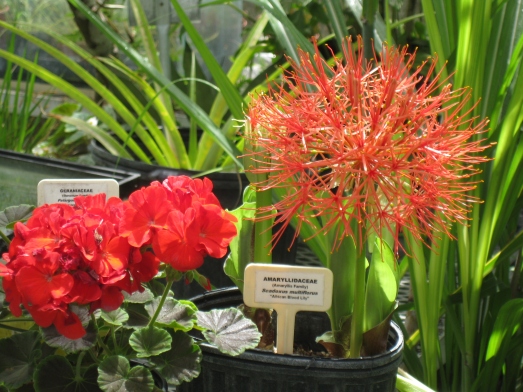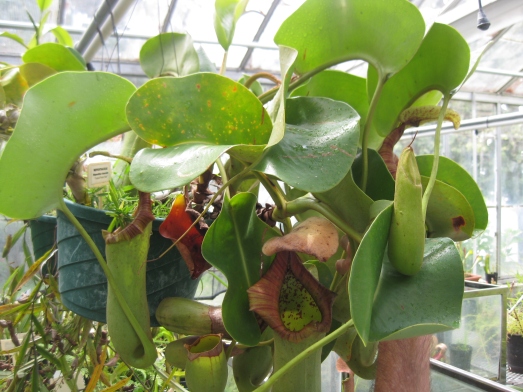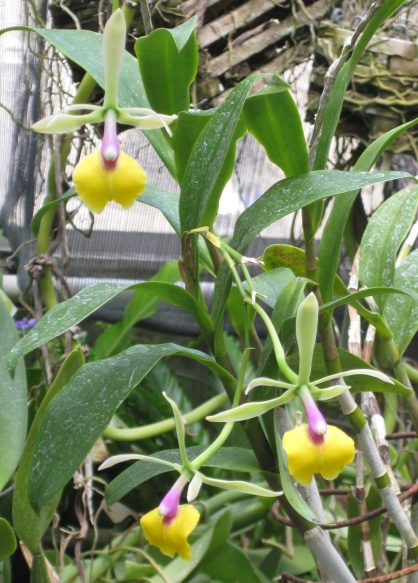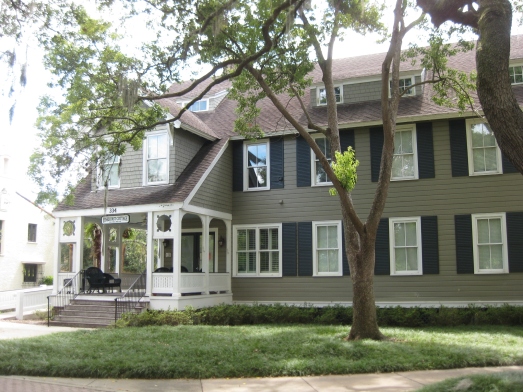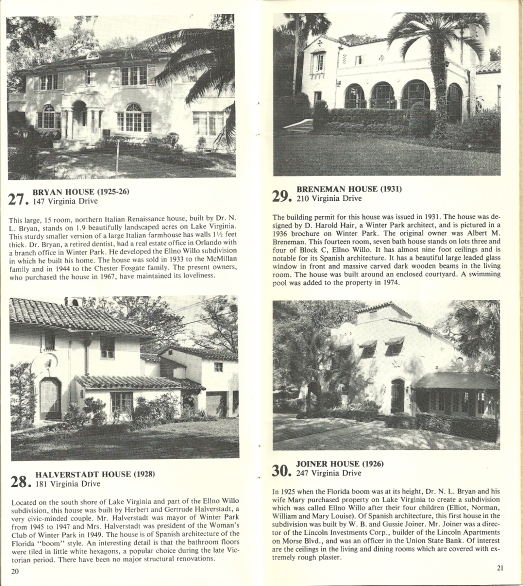
Can you hear that sound of stampeding feet? Welcome Lufthansa Flight 464 from Frankfurt am Main to Orlando International Airport!
As scheduled, and after looking forward to it for many months, Nicola– my 19-year-old Italian second cousin once removed– arrived for two weeks of relaxation before starting his sophomore year at the University of Pisa. Though he did bring his geography text to study for a September 20th. exam, I only saw it brought out on a couple of occasions. Good for him! He’s going to ace it anyway– he’s riding a 100% average after his first year. [He did.]
“Where do you want to go in Florida?” I asked him prior to his visit. The theme parks didn’t figure into his equation; he wanted nature, and giant bridges spanning endless expanses of ocean, and alligators; but no sharks and– of course– a visit to Miami. But not necessarily Miami Beach. And he wanted to see some American Protestant churches– not that he’s shopping for a new religion but, after living in Catholic-saturated Italy, he wanted to see how the other half worshiped. And if we could have gotten into the Mormon temple in Orlando, I’m sure it would have been on his list as well.
Once we had a travel agenda in place, I was able to start worrying about what to feed him. I knew what Italians generally ate after spending time there in the past, but I naturally worried about what he might find unappetizing. We did well, however; corn stayed untouched on his plate, either cobbed or loose, but most vegetables and poultry and meat were duly appreciated. Corn, it seems, is fed to livestock. Polenta? Don’t get me started; that’s what peasants ate if there was any corn left over after throwing it to the pigs. And one night I hand-made pappardelle noodles and a wonderful pesto, which was actually a bonus because the women in his family don’t make pasta by hand anymore. (“The ones that do are all dead.”) And he enjoyed the Mexican fare we had in South Florida, as well as a Chinese meal here at Jum Bo in Winter Park. But Italian fare in Key West was not entirely authentic, he decided. Sorry! And they mispronounced bruschetta. It’s broo-SKET-ta, not broo-SHET-ta. (Note to self: load car with prosciutto e melone prior to any long drives involving Italian relatives. And keep a ready baked ziti warming on the manifold, just in case. A translating dictionary, too.)
Nico got to meet my mother and sisters and brother-in-law for the first time, immersing himself in a saturation dose of my family. When together, we’re loud… and he loved it. Here we are– yours truly, Nico, and Kirk, posing dutifully by Lois and Mike’s pool in Port St. Lucie, a small fishing village wedged between the Atlantic and the Everglades.

Nico was VERY taken by how wide and far everything is here in America. We drove down through the center of the state along US-27 when we headed to Key West; I love that route because it’s wide and empty and scenic. By the time we got to the Everglades entrance in Homestead, which is about 209 miles from my house here in Winter Park, we could have driven from his house in Lucca all the way to Rome– a whole other region and a whole other dialect. And we STILL had hours to go until we reached Key West.
I’d never been to the Everglades, and we were both impressed. An alligator showed up, as anticipated, and we posed my cousin next to a sign fraught with warnings:


A primeval killer.
We drove further into the park after spending some time at this hammock, but the road grew grungier and the sky blacker, convincing us to head back to town and some Mexican food. There’s such a sense of vastness in the Everglades. The sky and the flatness stretch out before you, and when you’re the only ones on the road like we were it feels like Earth has been evacuated. Where are the souvenir stands, your mind cries out! There’s nothing but swamp! “It’s all very green,” Nico said. “From Orlando to here has been nothing but green.” “We are one of the nation’s vegetable baskets,” I replied, sounding like my third grade nun. “See all those plants that look like corn? That’s sugar cane! This is where we get the sugar for all those Snickers bars we ate on the way down here.”
The next morning we headed for Key West along U.S. Highway 1, which is the only road into the Keys. There are some stretches where you just don’t drive faster than ten miles above the posted speed limit, yet there is always one bozo behind you who wants to go even faster. “Bozo,” I explained to Nicola, “was a television clown here in America.” “I hate clowns… I am afraid of them!” “Me too.”
He was very taken with the palette of blues and greens which color the water on the way down through the island chain. And even though it was six thousand degrees outside the car, he gamely posed in the sun while wearing his mosquito suit. (Jeans and long sleeves.)

“I think I’ll sleep,” he said at one point while I drove us through the endless miles of azure and teal. “Please do,” I replied, which he interpreted ironically, a Tuscan trait which, incidentally, had the both of us raising amused eyebrows for the two weeks he was in Florida. As when I attempted to tell him, in Italian, something about bringing along a duffel bag: “Don’t even try,” he replied. Had there been a dueling oak in Winter Park, I’m sure we would have met beneath it one fine morning– linguistically, of course. Neapolitans or Sicilians would simply throw knives at one another and be done with it but, being Tuscans, we duel with eyebrows. (Admittedly, I am half Neapolitan, and Nico and I are both descended from a Sicilian woman. But that’s a state secret) And I had the pleasure of explaining to him the subtle differences among underneath, under, and below. Being a scholar of languages, his fluency in Latin and Ancient Greek allows him to grasp the subtleties of our barbaric language in a trice; it was like driving with Homer.
We stopped at this church on Key Largo just to prowl around inside and visit the Sacrament. Nico was impressed by how modern and suburban most Florida churches are.

After a few hours, we arrived in Key West. To me, it always feels like I’ve come home. To Nico, it was his first slice of urban paradise, and he loved it immediately. We drove in via the southern entrance, past the forts along the Atlantic, and he could not get over the fact that here was this vast, spreading ocean nestled against this charming little city. And the air is always so fresh… it was a pleasure to see the look on his face: another convert!
Here’s Nico on Elizabeth Street, which we decided was named for Jack’s male secretary on Will & Grace. Remember? “Elizabeth!!!” He loves that show, and we watched a lot of episodes in Italian on my computer. They are just as crazy, Karen even more so.

One of my favorite spots in Key West is atop La Concha Hotel, where you have views of the entire town. Here’s my cousin backed by St. Paul’s Episcopal, which he was very impressed with. I am too– the figural stained glass alone is worth the trip. And it’s one of those Episcopal sanctuaries that is just a hair’s breadth away from being entirely Roman Catholic; sometimes they’ll tell you “we have everything but the Pope,” which doesn’t seem like such a bad idea these days.

And, of course, here’s Bonnie Albury’s house, which I’ve written about recently. I am ready to move in here. Where’s the contract?

We stayed at Oasis, one of those guest houses for men, which was a first for him. I felt like the old geezer trailing his young companion along with him: “This is my Italian cousin,” I felt compelled to tell the desk clerk and any guests we spoke with. And then I would get the gay male version of the raised eyebrows look. So what! Believe what you want.
We swam in the pool and were able to splash around at will, because the joint was deserted. “It’s the slow time of year,” everyone kept telling us, which was fine with me. We did notice a lot of lesbian couples strolling through town, holding hands, and then we realized it was Women’s Week, or close to it. Nico was amazed at the freedom, and stunned at the look of a housewife– there could be no other word– who shot THE filthiest look at a female couple as she passed by them on the sidewalk. Why even bother dragging your husband and kids to Key West if you’re going to come with THAT attitude? Honestly.
We stopped in at the 801 one night so Nico could get his first look at a gay club. Filled with carousing locals, it was a pleasant introduction. I had a beer, he had a soda, and we found ourselves seated next to a couple who happened to be staying at our guest house. When my cousin got up to find the facilities, I got the eyebrows from one of them, but then I entered into a conversation with the bartender and told him about Nico visiting from Italy. “He’s my cousin,” I said in their direction. “My second cousin once removed.” It turns out the bartender’s people are from Italy as well, and so he and Nico had a chat about the old country when my cousin found his way back to his bar stool.
The gay community center on Truman Avenue was enlightening for him– there’s just nothing like it in rural Italy. Here was an entire structure devoted to tolerance, with a great display about Tennessee Williams. (Hi Susan!)
We stayed two days and then drove back to downtown Miami, where my second cousin Steven on my father’s side owns an Italian restaurant named Perricone’s. What a meal! We arrived halfway between lunch and dinner, and so had everyone’s attention. The place is amazing, and Steven was on the premises and able to hang out for a while. And Nico loved the food.
He had a great time here, and I truly miss his company. Now he’s back in Italy, totally immersed in his sophomore year at the University, and dying to come back to America. I’m dying to go back to Italy, so it’s been decided that Kirk and I will be visiting there next year, because Nico’s entire family wants to meet us as a couple. And that’s a whole other story. There were plenty of issues when my cousin came out to his people, and lots of eMails back and forth between him and Cousin Jimmy, beseeching advice and help during what turned out to be a rather emotional and trying time, but eventually everybody saw reason. I feel like I’ve accomplished something good and lasting in my life regarding HIS life, but I’m mostly thankful for his family’s understanding and support. It was a stretch for a gang of rural Italians to come to grips with such a concept as a gay son / grandson / nephew.
Now summer’s over, and we can all start looking forward to the next.



